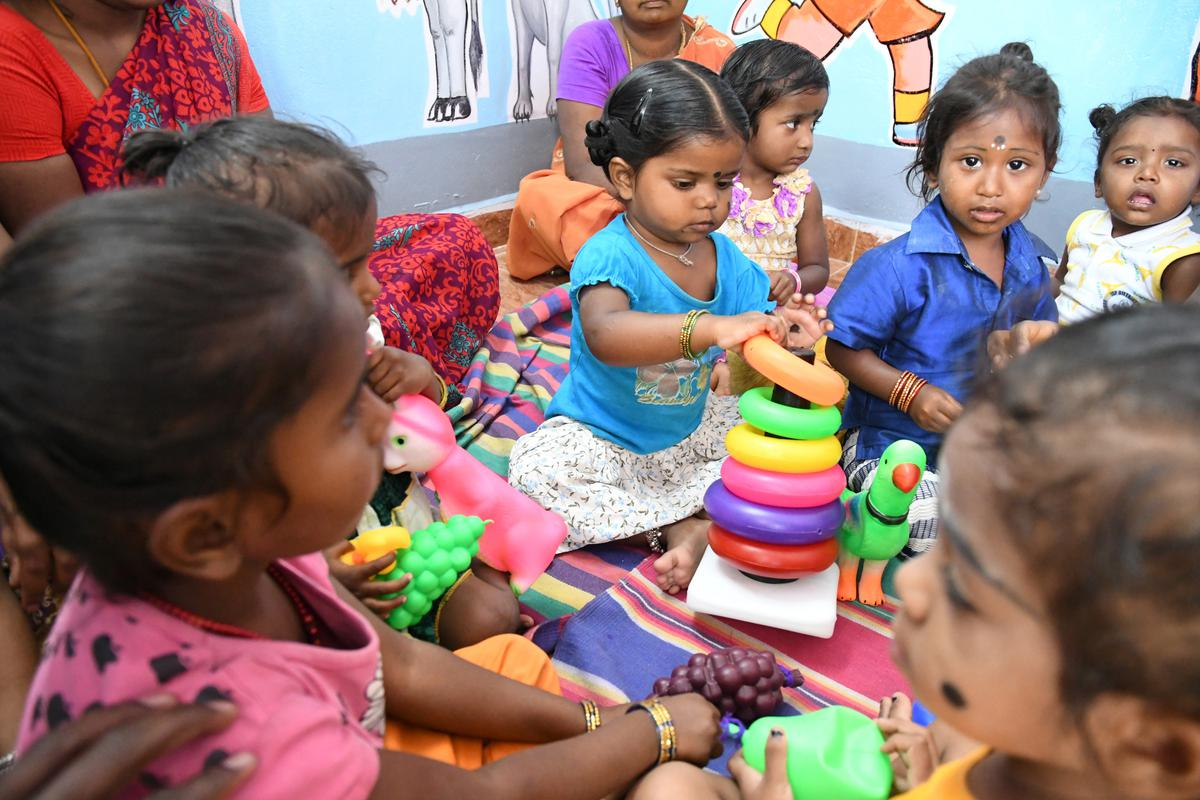Description

Copyright infringement not intended
Picture Courtesy: www.thehindu.com
Context: The National Programme on Anganwadi-Cum-Crèche (Palna) at Vigyan Bhawan, Delhi, addresses urban childcare gaps under Mission Shakti's Samarthya sub-component since April 2022, aiming for quality facilities to support women's workforce participation.
Details
- The National Programme on Anganwadi-Cum-Crèche (Palna) held at Vigyan Bhawan in New Delhi aimed to address the gap in childcare facilities, particularly in urban areas where family support may not be available. The initiative falls under the Samarthya sub-component of Mission Shakti, starting from April 2022. The central goal is to meet the demand for quality childcare facilities and encourage women's active participation in the workforce.
Key points and highlights of the program
- Revisions and Inclusions: The Anganwadi-Cum-Crèche initiative under the Palna Scheme underwent revisions and was included as part of the Samarthya sub-component of Mission Shakti.
- Standard Operating Procedure (SOP): A comprehensive SOP for Anganwadi-Cum-Crèche under Palna was released during the event. The SOP outlines the framework for the administration and implementation of the scheme, including administrative hierarchy, roles and responsibilities of workers, and monitoring checklists.
- Government's Target: The government aims to establish 17,000 Crèches under the Palna scheme, and as of the event date, 5,222 have been approved.
- Additional Workers: Two additional Crèche workers and helpers will be deployed along with existing Anganwadi workers and helpers under the Palna scheme.
- Increased Women Workforce Participation: The program emphasizes the role of Anganwadi-cum-Crèches in improving women's labour force participation, especially in urban areas where institutional support for childcare is crucial.
- Focus on Women's Economic Empowerment: The Ministry highlighted its efforts to facilitate women's economic empowerment, and discussions included topics like corporate social responsibility, family-friendly workplaces, and the need to nurture the childcare sector for women's economic opportunities.
- Panel Discussions: Two-panel discussions were conducted during the program, focusing on "Care Economy: Care to Empowerment" and "Interventions in Implementing Day Care Centres/ Crèches." The discussions covered topics such as transformative care policies, skills and courses on care work, and the institutionalization of day-care centres.

Conclusion
- The program focused on bridging the childcare gap, enabling women's workforce participation, and creating a supportive ecosystem for quality childcare services.
|
PRACTICE QUESTION
Q. What are the primary components and key objectives of the Early Childhood Care and Development (ECCD) program, and how does it contribute to the holistic development of children?
|










